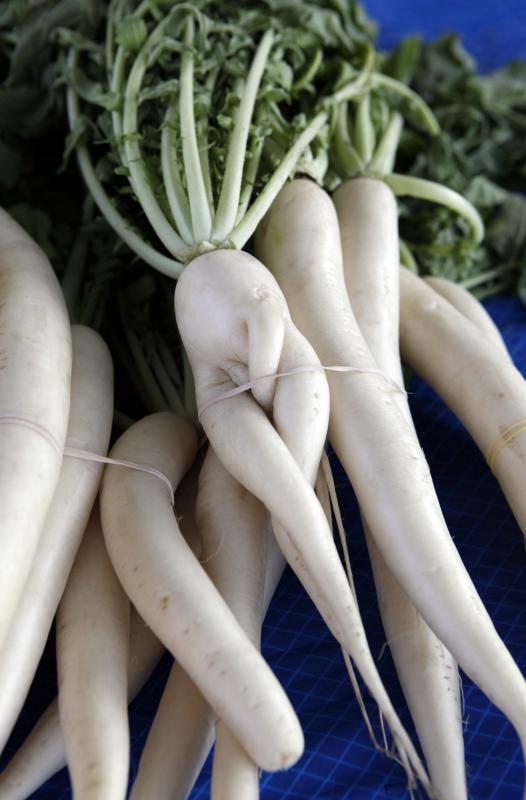At WiseGEEK, we're committed to delivering accurate, trustworthy information. Our expert-authored content is rigorously fact-checked and sourced from credible authorities. Discover how we uphold the highest standards in providing you with reliable knowledge.
What is Agedashi?
Agedashi is a delicious and simple tofu dish that is popular in Japan, and favored in the Western world. The principle ingredient of Agedashi is tofu, making the meal high in protein. Yet the tofu is deep fried, so it can also be a high fat dish depending upon the amount and type of oil you use and your frying methods.
Traditionally, agedashi begins by cutting tofu into cubes. Size varies but most recipes suggest the cubes be no longer than 1.5 inches (3.81) length on each side. A smaller one-inch (2.54 cm) cube is a common recommendation. If the cubes are much smaller than this they may cook too quickly and burn. Larger cubes may not fully heat in the center, so consider the above recommendation for maximum size.

The tofu cubes for agedashi are then rolled in cornstarch or potato starch—cornstarch is usually easier to find in the US, and deep-fried so the tofu takes on a wonderful golden-brown exterior crust. You can also pan fry agedashi cubes, but they will not have quite the same crust as the deep-fried version.
Agedashi is usually served with green onion, slices of white radish, called daikon, and sometimes even thin strips of fresh or pickled ginger. Most people prefer agedashi served in a broth made of Japanese soy sauce, cooking rice wine called mirin and a fish or vegetable stock. Alternately, you can serve agedashi cubes plain with any type of dipping sauce you desire.

Vegetarians in Japan and throughout the Western world have long enjoyed agedashi, since it can be prepared in a completely vegan style. The dish can also be a healthy way to get oils into the body, especially if you choose monounsaturated oils like canola for the deep-frying process. As with all things deep-fried, the tofu cubes should be set on a paper towel after cooking to absorb excess oil or they may taste greasy. Generally, agedashi should be served immediately after cooking or it will begin to taste oilier and will lose some of its crunch.
If you’re not up to making your own agedashi, you can commonly find it served in many Japanese restaurants, where it is a favorite. Served fresh, it makes a wonderful protein-filled dish with lots of flavor and a variety of textures. If you really want to make authentic agedashi, look for silken tofu, found most commonly in Asian food stores. You can usually find potato starch in Asian grocery stores too. Some chefs insist that to get the true flavor of agedashi, you should only fry agedashi in soybean oil, which compliments the tofu well.
AS FEATURED ON:
AS FEATURED ON:












Discuss this Article
Post your comments